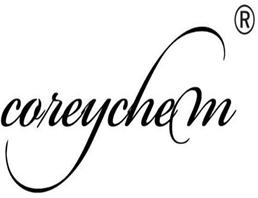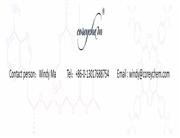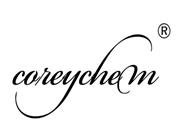| Chemical Properties |
colourless liquid |
| Definition |
ChEBI: An alkyl alcohol that is pentane in which a hydrogen of one of the methyl groups is substituted by a hydroxy group. It has been isolated from Melicope ptelefolia. |
| General Description |
A colorless liquid with a mild to moderately strong odor. Less dense than water. Flash point 91°F. Boiling point 280°F. Vapors heavier than air. Moderately toxic by ingestion. Vapors may irritate skin and eyes. Used as a solvent and to make other chemicals.
Pentanol is incompatible with strong oxidising agents, alkali metals, alkaline earth metals, halogens, hydrogen trisulphide, acids, acetaldehyde, acid anhydrides, acid chlorides, lithium aluminium hydride, isocyanates, dialkylmagnesiums, n-halomides, ethylene oxide, hypochlorous acid, hydrogen peroxide and sulphuric acid, nitrogen tetraoxide, nitryl hypochlorite, permonosulphuric acid, and tri-isobutyl aluminium. |
| Air & Water Reactions |
Highly flammable. Soluble in water. |
| Reactivity Profile |
Moderately toxic, flammable if exposed to powerful oxidizers. Incompatible with oxidizing materials, hydrogen trisulfide [Sax, 9th ed., 1996, p. 224]. |
| Health Hazard |
Irritation of skin, eyes, and respiratory tract; headache and vertigo; dyspnea and cough; nausea, vomiting, and diarrhea. Double vision, deafness, delirium, and occasionally fatal poisoning, preceded by severe nervous symptoms, have been reported. Coma, glycosuria, and methemoglobinemia can occur. |
| Fire Hazard |
HIGHLY FLAMMABLE: Will be easily ignited by heat, sparks or flames. Vapors may form explosive mixtures with air. Vapors may travel to source of ignition and flash back. Most vapors are heavier than air. They will spread along ground and collect in low or confined areas (sewers, basements, tanks). Vapor explosion hazard indoors, outdoors or in sewers. Runoff to sewer may create fire or explosion hazard. Containers may explode when heated. Many liquids are lighter than water. |
| Safety Profile |
Moderately toxic by ingestion and skin contact. An eye and upper respiratory irritant by inhalation. A severe skin and eye irritant. Ingestion can cause headache, nausea, vomiting, delirium, and methemoglobin formation. Mutation data reported. Extremely flammable if exposed to heat, flame, or powerful oxiduers. Moderately explosive when exposed to flame. Incompatible with oxidzing materials, hydrogen trisulfide. To fight fire, use alcohol foam, dry chemical. |
| Purification Methods |
Dry 1-pentanol with anhydrous K2CO3 or CaSO4, filter and fractionally distil it. It has also been treated with 1-2% of sodium and heated at reflux for 15hours to remove water and chlorides. Traces of water can be removed from the near-dry alcohol by refluxing it with a small amount of sodium in the presence of 2-3% n-amyl phthalate or succinate followed by distillation (see ethanol). Small amounts of amyl alcohol have been purified by esterifying with p-hydroxybenzoic acid, recrystallising the ester from CS2, saponifying with ethanolic-KOH, drying with CaSO4 and fractionally distilling [Olivier Recl Trav Chim Pays-Bas 55 1027 1936]. [Beilstein 1 IV 1640.] |

 China
China






